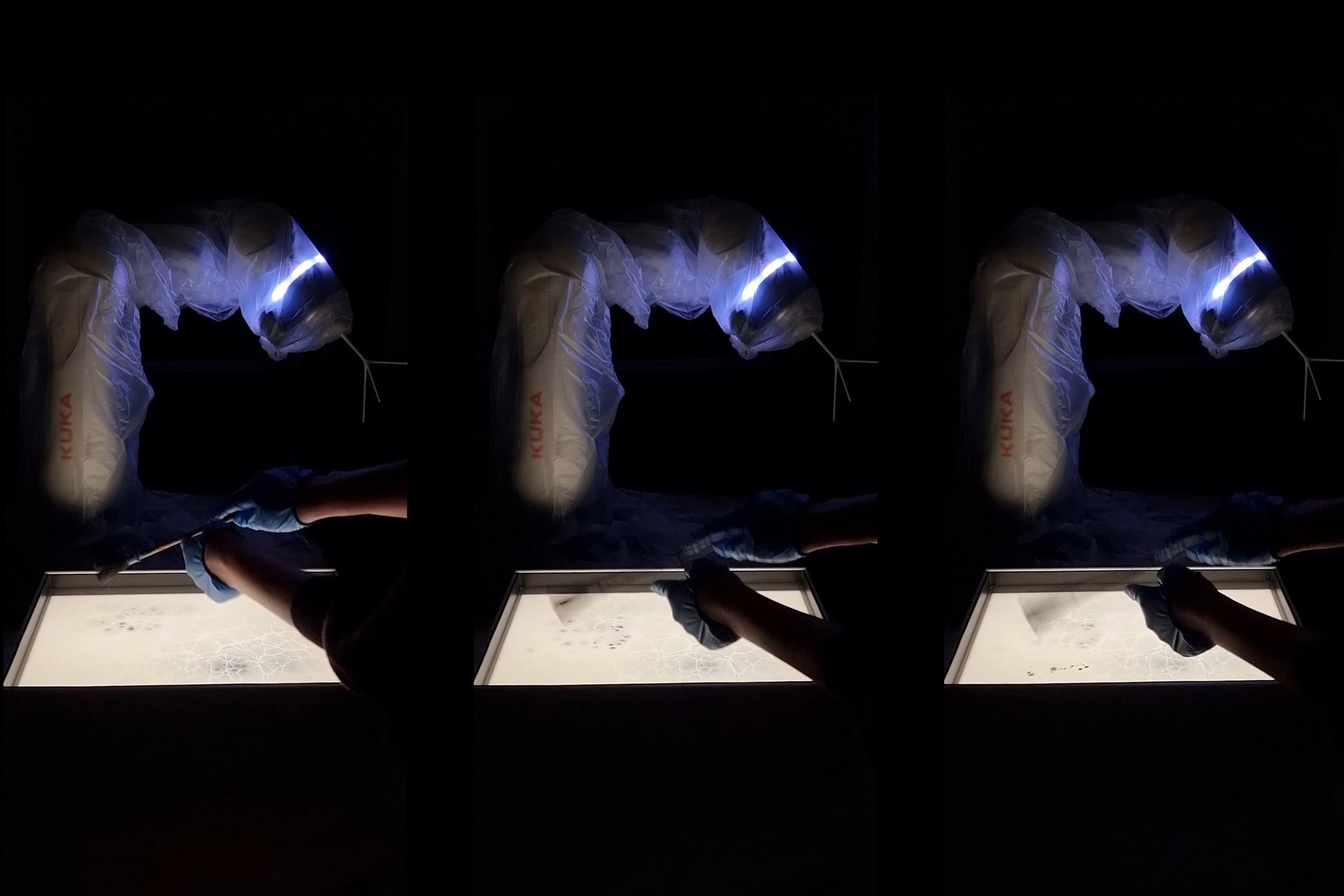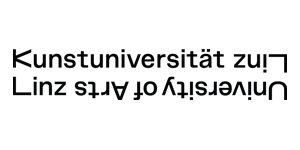This empirical study reveals how robot programming transcends mere automation, unlocking new layers of knowledge. Focusing on the generative potential of implicit knowledge within the maker’s hands, particularly in marbling, it develops a computational workflow that captures and translates hand movements. By utilizing the robot’s kinematics, it decodes the creation of unique patterns through rhythmic brush strokes, making tacit knowledge more explicit.
Bridging Crafts and Technology Through Embodied Knowledge Transfer
Integrating robot programming into crafts transcends mere automation, unlocking and conveying new layers of knowledge. This empirical study emphasizes the generative role of “thinking with hands,” investigating ways to transfer the implicit knowledge embedded in the maker’s hands.
The technological investigation is based on developing a computational workflow that captures and translates hand movements during interactions with materials and tools into robotic toolpaths. The robot’s kinematics are utilized to gain a better understanding of the process, rendering tacit knowledge more explicit.
The traditional craft of marbling serves as a case study, showcasing how unique patterns are created through the rhythmic paths of brush strokes. This exploration highlights how embodied thinking is making connections with visual outputs, offering new insights into the creative process
Bios
-
 Photo: Creative Robotics
Photo: Creative RoboticsBegüm Hamzaoglu
TR
Begüm Hamzaoglu is a PhD Candidate in the Architectural Design Computing Program under the Department of Informatics at Istanbul Technical University, where she works as a research and teaching assistant in the Department of Architecture. Her doctoral research focuses on bridging knowledge across heritage crafts and fabrication technologies. Hamzaoglu is currently a visiting researcher in the Department of Creative Robotics at The University of Art and Design Linz.
-
 Photo: Creative Robotics
Photo: Creative RoboticsJohannes Braumann
AT
Johannes Braumann is a professor for Creative Robotics at UfG Linz, leading an interdisciplinary team of researchers towards exploring robots as an interface between the digital and physical world. As co-founder of the Association for Robots in Architecture, he is tightly linked with both the robotics and design community. Braumann is the main developer of the accessible robot simulation and programming tool KUKA|prc, which is today used by more than 100 universities and 50 companies worldwide.
-
 Photo: Creative Robotics
Photo: Creative RoboticsKarl Singline
AT
Karl Singline is a graduate architect and roboticist from Australia. He runs a popular YouTube channel, specializing in tutorials on visual programming and robotics. As lead researcher within Creative Robotics, Singline works on personal research as well as partnering with external industry partners to further explore new ways of adapting robotic technologies to architecture and other creative industries.
Credits
Creative Robotics, University of Arts Linz (AT): Johannes Braumann, Begüm Hamzaoglu, Karl Singline, Martin Schwab, Mika Brandhofer, Hanif Haghtalab
The project is realized by the University of Arts Linz and is part of the DigitalWerk Initiative. DigitalWerk is an Initiative within “Digital and Social Transformation in Higher Education (DX)” initiated and funded by the Federal Ministry of Education, Science, and Research (BMBWF).
Presented in the context of the Label4Future project. Label4Future is funded by the European Union (European Innovation Council and SMEs Executive Agency EISMEA) under grant agreement No. 101133162.





